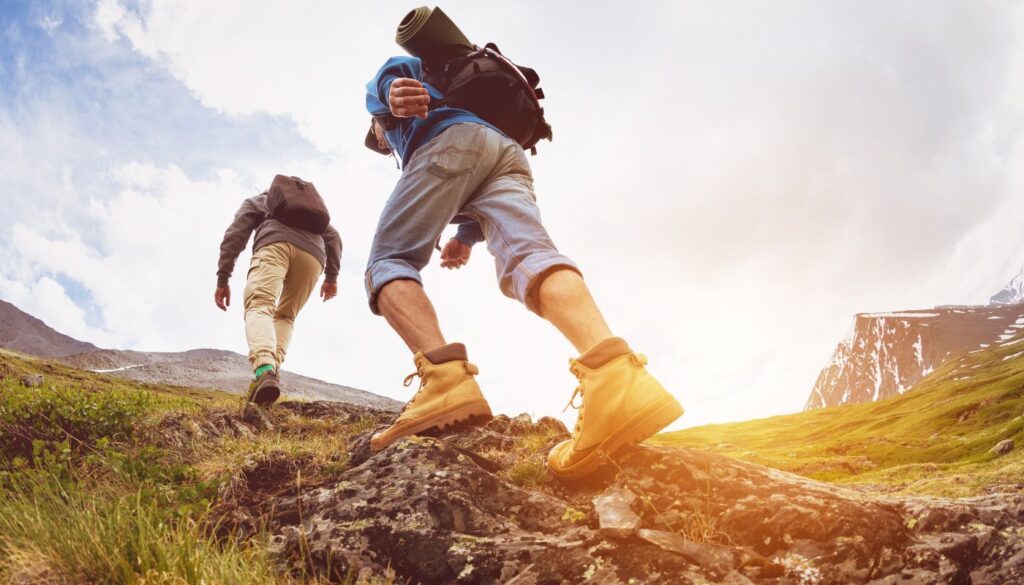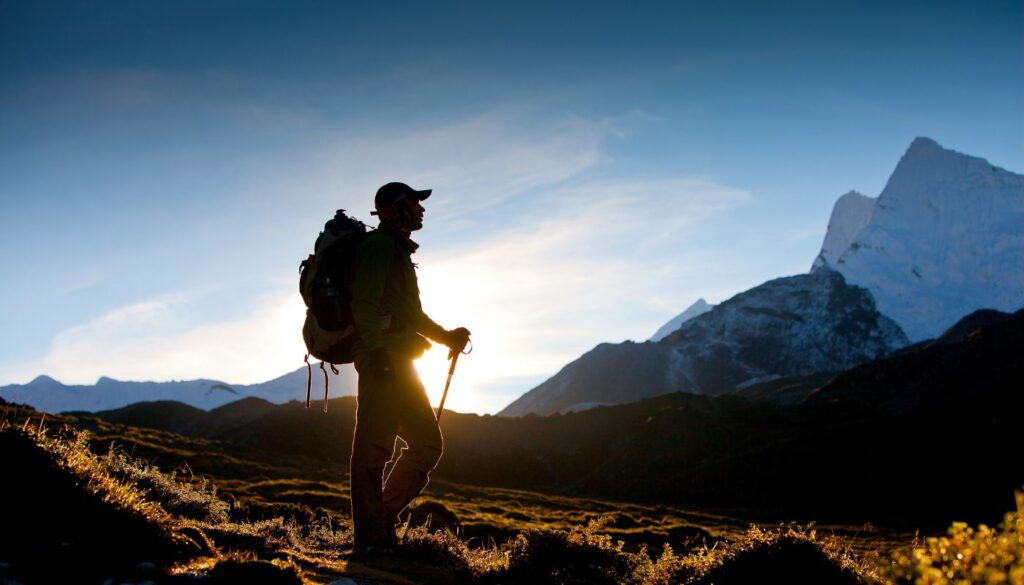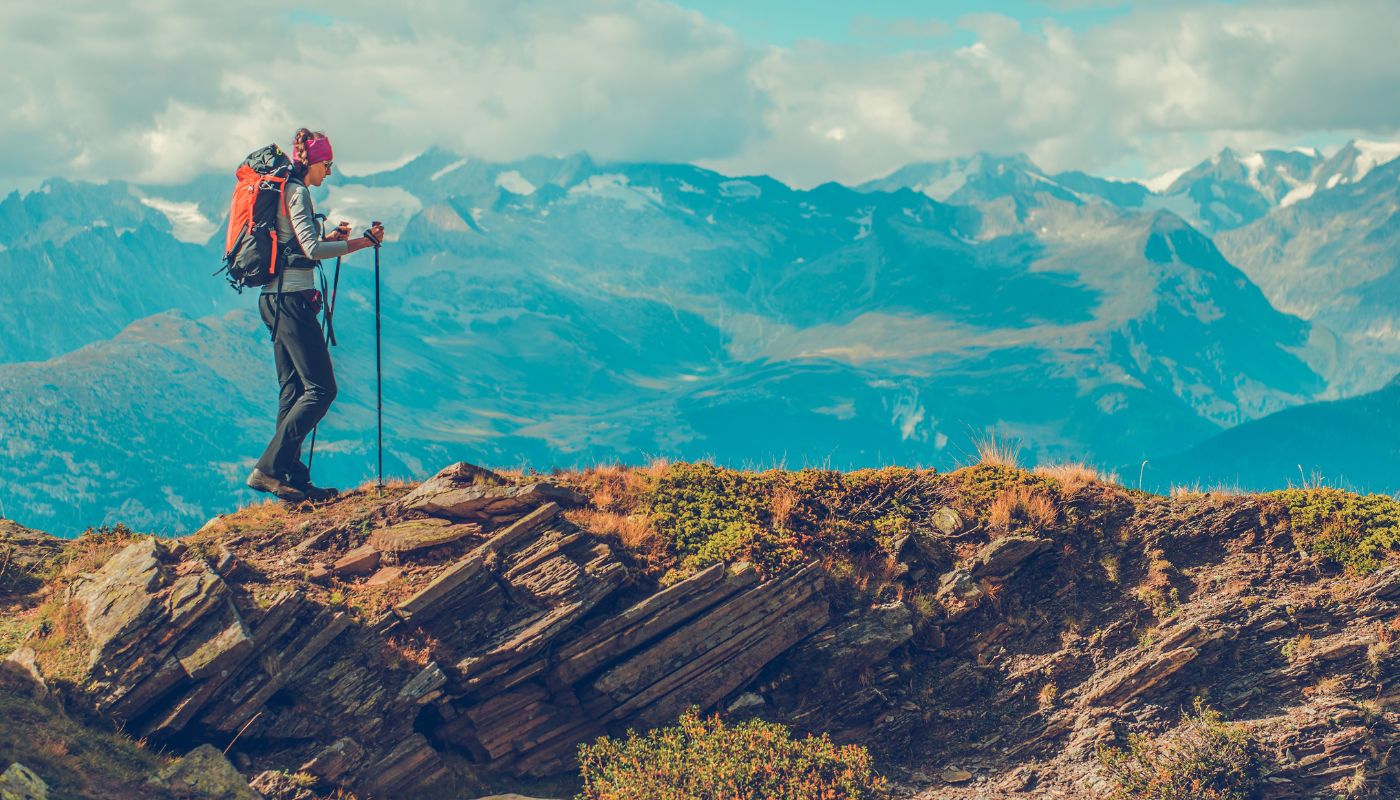Nestled within the rugged landscapes of Iran lies a towering giant, reigning as the highest peak in West Asia, and beckoning adventurers from around the globe. This majestic mountain serves as a paradise for enthusiasts of hiking, trekking, and mountaineering, offering an unparalleled journey through breathtaking sceneries and challenging terrains. Discover the ultimate destination for your next outdoor adventure and prepare to be captivated by the beauty and thrill it promises. Join us as we explore the pinnacle of West Asian mountaineering.
Exploring the Majestic Mount Damavand
Mount Damavand, standing tall at an impressive altitude of 5,610 meters, is not only the highest peak in Iran but also the most prominent mountain in West Asia. This colossal giant beckons adventurers from across the globe, offering an unparalleled experience for those interested in hiking, trekking, and mountaineering. The mountain is not just a physical challenge; it’s a journey through diverse ecosystems, historical sites, and breathtaking landscapes that promise to leave every visitor in awe.
The ascent to the summit of Mount Damavand is a journey that tests both physical endurance and mental fortitude. However, the path is well-trodden, with routes that cater to both novice hikers and seasoned mountaineers. The mountain’s southern route is the most popular, offering a relatively straightforward climb, while the northeastern and western routes present more challenging terrains for those seeking an adrenaline rush. The beauty of Damavand lies not only in its towering height but also in the rich tapestry of flora and fauna, hot springs, and the mythical significance that surrounds it. The mountain is steeped in Persian mythology, often associated with epic tales and legends that add a mystical allure to its snowy peaks.
Moreover, the region surrounding Mount Damavand is a treasure trove of cultural and natural attractions. From the ancient ruins scattered around its base to the vibrant wildflowers that blanket its slopes during the spring and summer months, Damavand is a year-round destination for nature lovers and culture enthusiasts alike. The mountain’s ecosystem is home to an array of wildlife, including the Persian leopard, making it a vital conservation area. The climb offers breathtaking views of the Alborz Range, with clear days providing vistas that stretch as far as the Caspian Sea.
Additional Insights into Mount Damavand
Mount Damavand is not just a mountain; it’s an emblem of Iranian pride and natural beauty. Its presence in Persian literature and folklore adds a layer of cultural significance that makes the climb a deeply personal experience for many Iranians. For international climbers, it offers a unique glimpse into Iran’s rich heritage and the hospitality of its people, who are always eager to share the wonders of their land. The mountain’s volcanic nature is another fascinating aspect, with fumaroles and sulfuric gas vents near the summit reminding adventurers of the earth’s potent forces at work. Despite its dormant status, Damavand’s volcanic heart is a stark contrast to the icy exterior, making it a geological wonder worth exploring.
Preparing for Your Adventure
- Acclimatization: Spend a few days at a high altitude to adjust your body to the reduced oxygen levels.
- Physical Training: Engage in regular hiking, climbing, and cardio exercises months before your trip.
- Equipment: Invest in high-quality mountaineering gear, including boots, clothing, and safety equipment.
- Guides: Consider hiring a local guide who knows the mountain well and can navigate safely through challenging terrains.
- Permits and Regulations: Ensure you have all the necessary permits and are aware of the environmental regulations to protect the mountain’s delicate ecosystem.
The journey to the summit of Mount Damavand is an adventure that promises not only the thrill of conquest but also a profound connection with nature and history. Whether you’re an avid mountaineer or a curious traveler, Damavand offers an unforgettable experience that challenges the body, stimulates the mind, and enriches the soul.
Discover the Majestic Heights of Mount Damavand

Standing tall at an impressive 5,610 meters (18,406 ft.), Mount Damavand is not only the highest peak in Iran but also the highest volcano in Asia, making it a beacon for adventurers seeking the ultimate hiking, trekking, and mountaineering experiences in West Asia. This iconic mountain is a part of the Alborz mountain range and is located near the southern coast of the Caspian Sea. It is revered in Persian mythology and literature, adding a rich cultural layer to its natural beauty.
Mount Damavand’s unique geographical features, including its snow-capped summit, sulfuric vents, and stunning scenery, offer a challenging yet rewarding experience for mountaineers. The mountain boasts several routes to the top, with the south route being the most popular due to its relatively easier terrain and the availability of shelters and hot springs along the way. Climbing Damavand is not just a physical endeavor; it’s an exploration into the heart of Persian folklore and an opportunity to witness the breathtaking landscapes of Iran.
The best time to ascend Mount Damavand is during the summer months, from June to September, when the weather conditions are most favorable. Preparing for the climb requires careful planning, including acclimatization to the high altitude, securing the necessary permits, and ensuring you have the right gear. Whether you are an avid trekker looking for your next challenge or a nature lover eager to explore unique landscapes, Mount Damavand promises an unforgettable adventure.
| Feature | Description | Importance |
|---|---|---|
| Height | 5,610 meters (18,406 ft.) | Highest peak in West Asia |
| Location | Alborz Mountain Range, Iran | Near the Caspian Sea |
| Popular Route | South Route | Easier Terrain |
| Best Season | June to September | Favorable Weather |
| Cultural Significance | Revered in Persian Mythology | Rich Cultural Experience |
Essential Gear for Damavand Ascent

Ascending Mount Damavand, the highest peak in Iran and West Asia, is a thrilling adventure for hikers, trekkers, and mountaineers. This challenging expedition requires meticulous preparation, especially regarding gear selection. To ensure a safe and enjoyable ascent, certain essential equipment cannot be overlooked.
First and foremost, appropriate footwear is crucial. A pair of high-quality, waterproof, and insulated mountaineering boots will protect your feet from the harsh conditions and provide the necessary grip on icy and rocky terrains. Equally important is the selection of thermal and waterproof clothing. Layering is key in managing body temperature and coping with the rapidly changing weather conditions on Damavand. Starting with a moisture-wicking base layer, add an insulating layer, and finish with a waterproof and windproof outer layer to shield against the elements.
A reliable backpack is essential for carrying your gear and supplies. It should be spacious enough to hold your essentials but compact enough not to hinder your movement. Other critical items include a high-quality sleeping bag rated for low temperatures, a lightweight tent for overnight camps, sunglasses or goggles for eye protection, and a sun hat or cap to protect against sun exposure. Navigation tools such as a map, compass, or GPS device, alongside a headlamp or flashlight with extra batteries, are indispensable for safety during your trek.
| Item | Specification | Reason for Necessity |
|---|---|---|
| Mountaineering Boots | Waterproof, Insulated | Protection and grip on icy/rocky terrains |
| Thermal Clothing | Moisture-wicking base layer, Insulating layer, Waterproof outer layer | Temperature management and protection from elements |
| Backpack | Spacious yet compact | Carrying essentials without hindering movement |
| Sleeping Bag | Low-temperature rating | Warmth during overnight camps |
| Sunglasses/Goggles | UV protection | Eye protection from glare and UV rays |
Best Season for Climbing in Iran
The optimal time for climbing, trekking, and mountaineering tours in Iran is largely contingent upon the specific mountain range one aims to explore. However, the general consensus within the mountaineering community points to the spring and autumn months as the most favorable periods for such activities. During these seasons, the weather is typically mild, offering climbers the opportunity to enjoy their ascent without the extreme cold of winter or the overwhelming heat of summer.
Mount Damavand, the highest peak in Iran and West Asia, presents a unique case. The best times to ascend this majestic mountain are from late June to September, when the weather conditions are most stable and the risk of severe storms is minimal. This window allows for a safer and more enjoyable experience, whether one is a seasoned climber or a novice looking to conquer their first high-altitude summit.
It’s important to note that while these seasons are ideal, weather in the mountains can be unpredictable. Climbers should always prepare for sudden changes in conditions and have the necessary gear to ensure their safety. Planning and research are key components of a successful and enjoyable climbing experience in Iran.
Additional Insights on Choosing the Right Season for Climbing in Iran
Understanding the climatic patterns of the region can significantly enhance the climbing experience. Here’s a deeper dive into what climbers can expect during the recommended seasons:
- Spring (March to May) offers blooming landscapes and gradually warming temperatures, ideal for those looking to enjoy the natural beauty of the Iranian mountains.
- Autumn (September to November) is characterized by crisp air and clear skies, providing excellent visibility and comfortable conditions for climbing.
- Summer (June to August) in some regions, especially at lower altitudes, can be extremely hot, making climbs more challenging and less enjoyable.
- Winter (December to February) sees many of Iran’s mountains covered in snow, appealing to those interested in winter sports and ice climbing but posing significant challenges in terms of weather and accessibility.
- Altitude plays a crucial role in determining the best season for climbing, as higher peaks like Damavand have shorter optimal climbing windows due to harsher conditions.
Deeper Exploration into Climatic Variations and Their Impact on Climbing in Iran
Each mountain in Iran offers a unique climbing experience, influenced heavily by its geographical location and altitude. By choosing the appropriate season, climbers can ensure not only their safety but also the likelihood of a rewarding journey up the slopes of Iran’s stunning peaks.
Navigating Damavand’s Challenging Trails
Mount Damavand, the highest peak in Iran and West Asia, stands as a colossal challenge and a beacon for adventurers seeking the thrill of high-altitude hiking, trekking, and mountaineering. The journey to its summit is not just a physical test but also a passage through diverse terrains that showcase the beauty and harshness of nature. The trails leading to Damavand’s peak are laden with snowfields, rocky passages, and steep inclines, demanding not only physical stamina but also mental fortitude from its challengers.
For those prepared to navigate its challenging trails, Mount Damavand offers an unforgettable experience. The route begins through lush meadows and the aroma of wildflowers, gradually transitioning into rugged landscapes where the air thins, and the path becomes less forgiving. Acclimatization is key, as the altitude presents its own set of hurdles, with reduced oxygen levels testing the limits of even the most experienced climbers. Yet, the reward atop surpasses the trials faced during the ascent. The panoramic view from the summit, overlooking the vast Iranian plateau and the Caspian Sea, provides a sense of achievement and tranquility.
Preparation is paramount when tackling Damavand. Adequate gear, a firm understanding of the mountain’s weather patterns, and physical readiness are essential. It is highly recommended to undertake this journey with experienced guides who can navigate the challenges inherent to Damavand’s trails and ensure a safe and rewarding experience.
Essential Tips for a Successful Damavand Ascent
| Tip | Description | Importance |
|---|---|---|
| Acclimatization | Gradual adjustment to altitude to prevent AMS | High |
| Guidance | Engaging an experienced guide for navigation and safety | Critical |
| Equipment | Proper gear for varying temperatures and terrains | Essential |
| Physical Fitness | Being in good shape to handle the climb and altitude | Mandatory |
| Weather Awareness | Understanding seasonal conditions and planning accordingly | Important |
Local Cultures and Mount Damavand Myths
Mount Damavand is not only the highest peak in West Asia but also a symbol deeply ingrained in Iranian culture and mythology. This majestic mountain, standing tall at 5,610 meters, is more than just a site for hiking, trekking, and mountaineering; it is a beacon of Persian mythology and local cultures. The myths surrounding Mount Damavand are as towering as the mountain itself, with stories that have been passed down through generations, enriching the cultural tapestry of Iran.
One of the most famous legends associated with Mount Damavand is the tale of Zahhak, a figure from Persian mythology who is said to be imprisoned within the mountain. This story is a significant part of the Shahnameh, the epic poem that is a cornerstone of Persian literature. The locals believe that the serpents growing from Zahhak’s shoulders are trapped under Damavand, symbolizing the eternal struggle between good and evil. Furthermore, the mountain is often seen as a symbol of Iranian resistance and perseverance, embodying the spirit of the nation’s struggle against oppression.
Mount Damavand is also celebrated in the local communities for its natural beauty and the bounty it provides. The area is rich in hot springs and mineral waters, believed to have healing properties, drawing not only climbers but also those seeking wellness and rejuvenation. The slopes of Damavand are dotted with quaint villages, where the hospitality of the local people offers a warm welcome to visitors, providing a unique insight into the traditions and lifestyles that have developed around this iconic peak.
- The myth of Zahhak and the struggle between good and evil.
- Mount Damavand in Persian literature, particularly in the Shahnameh.
- The significance of Damavand as a symbol of national pride and resistance.
- The healing properties of the mountain’s natural hot springs and mineral waters.
- The hospitality and rich culture of the local communities surrounding Mount Damavand.
In conclusion, Mount Damavand is far more than just a mountain. It is a symbol of Iranian culture, mythology, and national identity. The legends that surround it, the natural beauty it exudes, and the culture of the people who live in its shadow all contribute to the mystique and allure of Damavand. For hikers, trekkers, and mountaineers, a journey to this peak offers an unforgettable blend of adventure, history, and cultural exploration.
